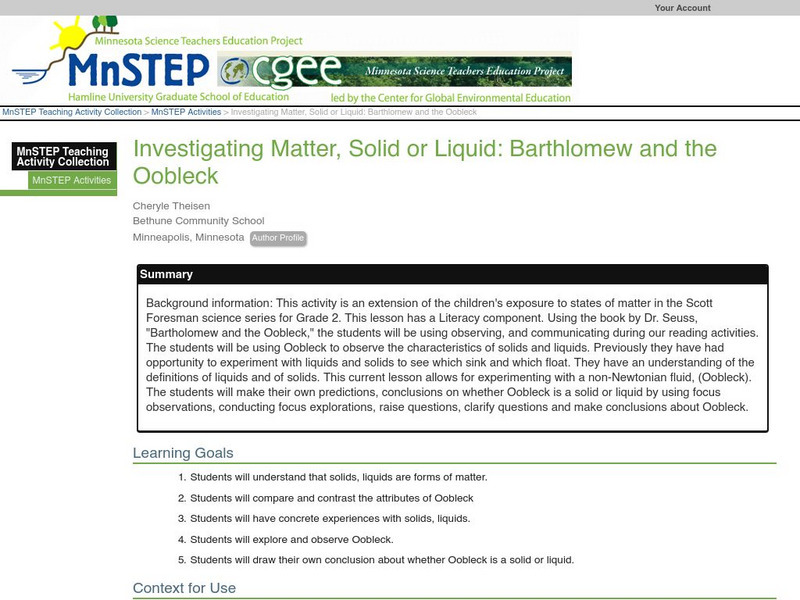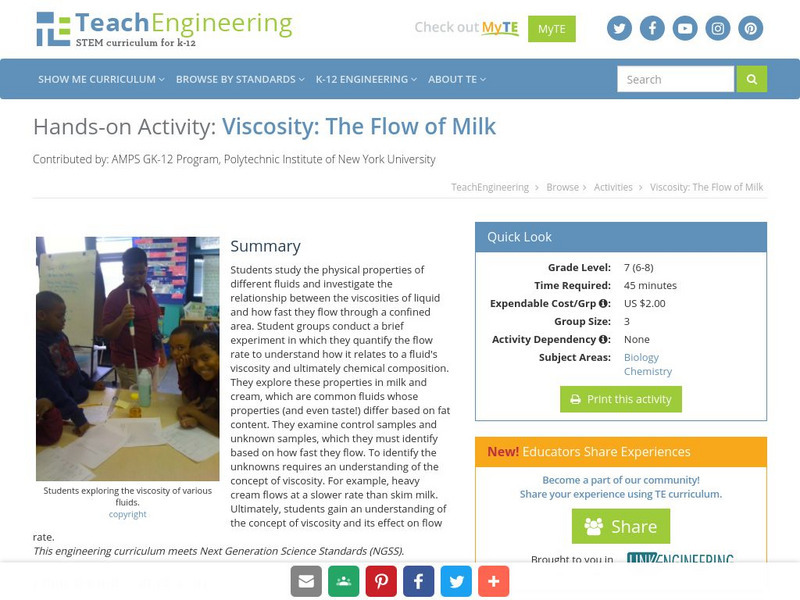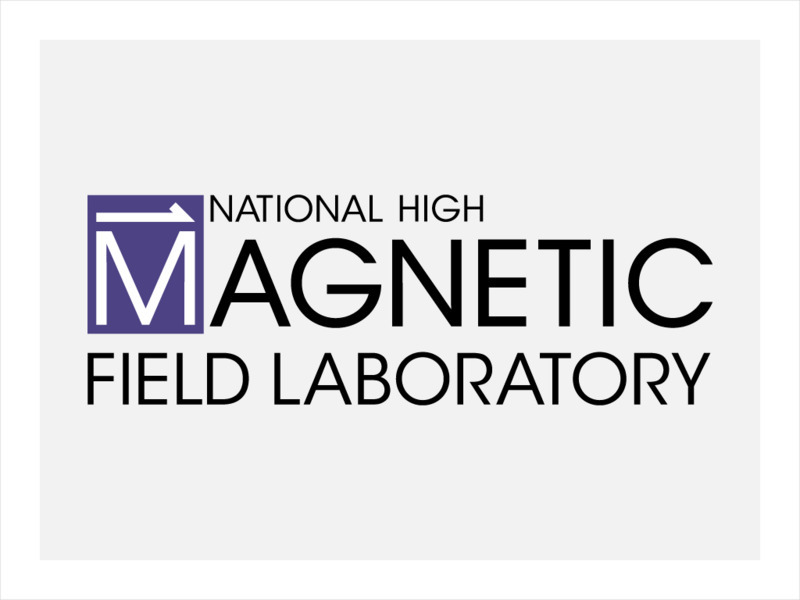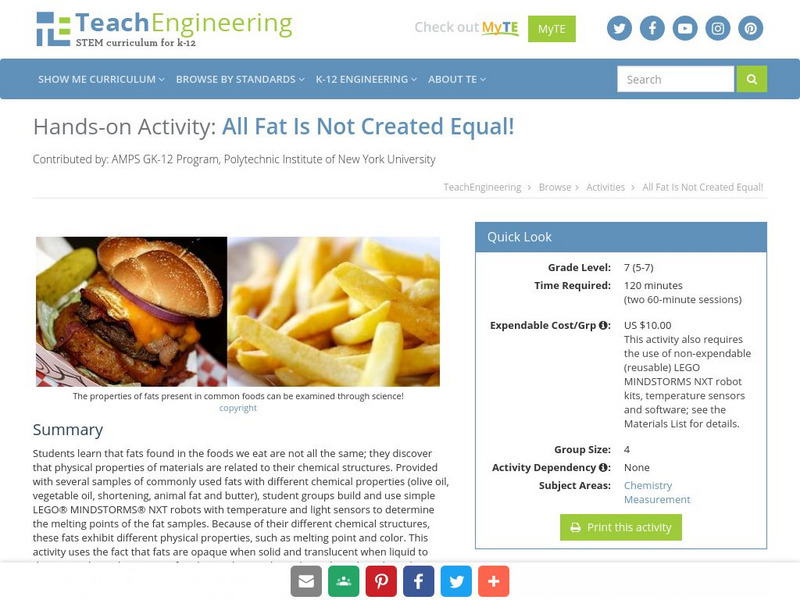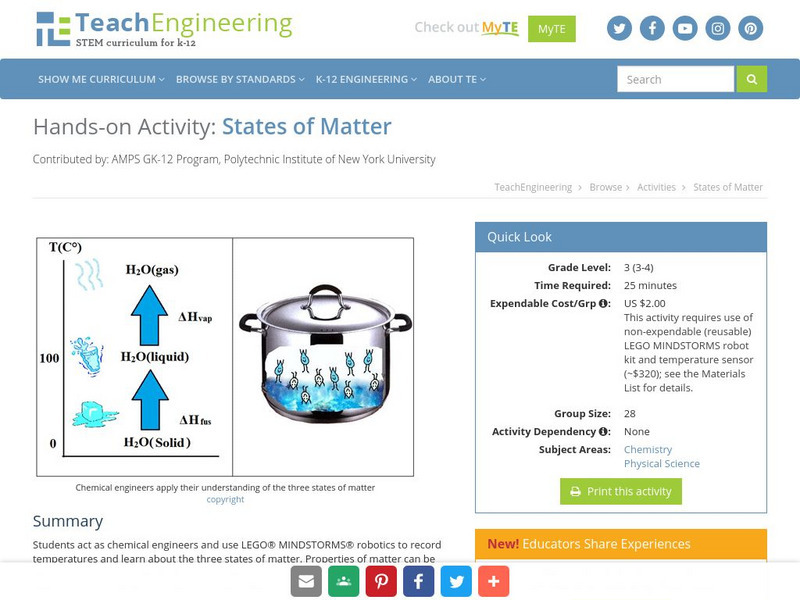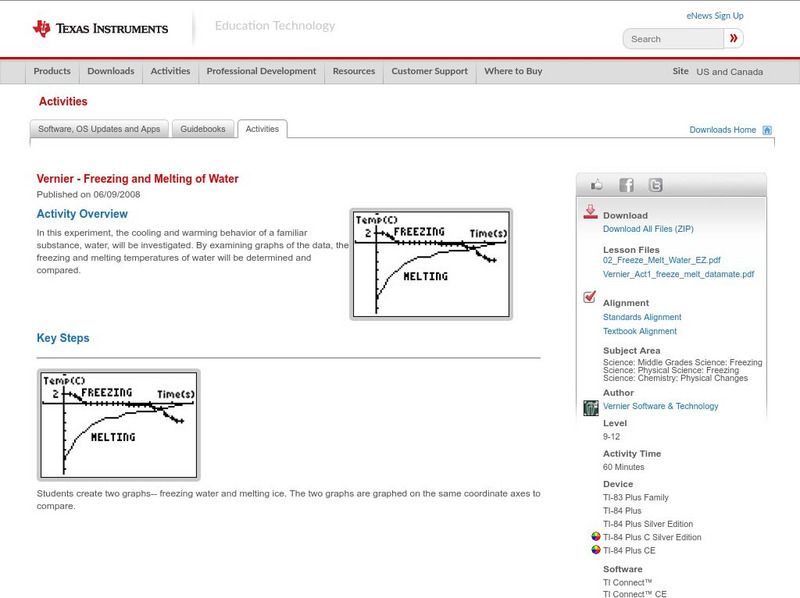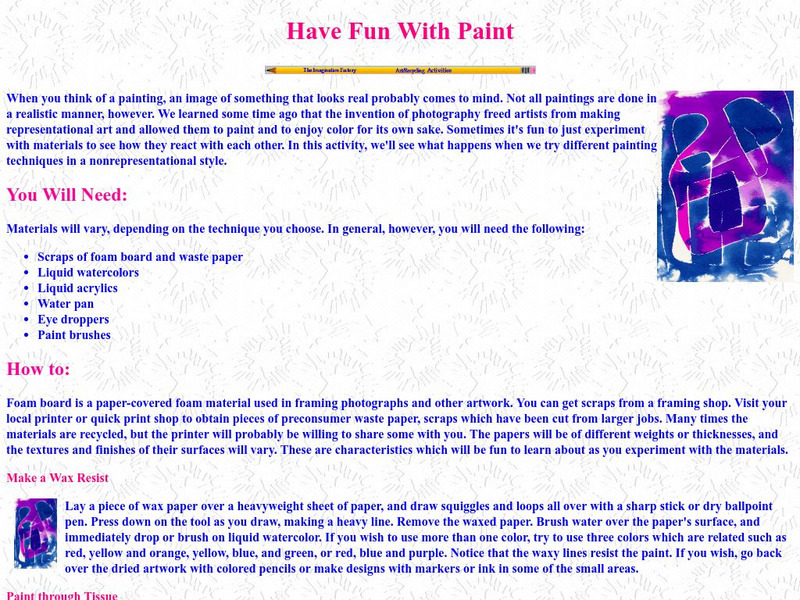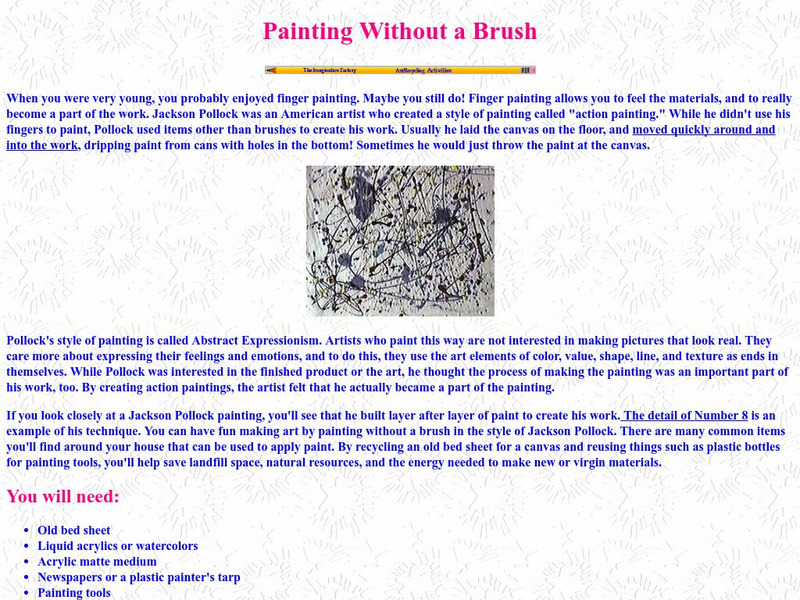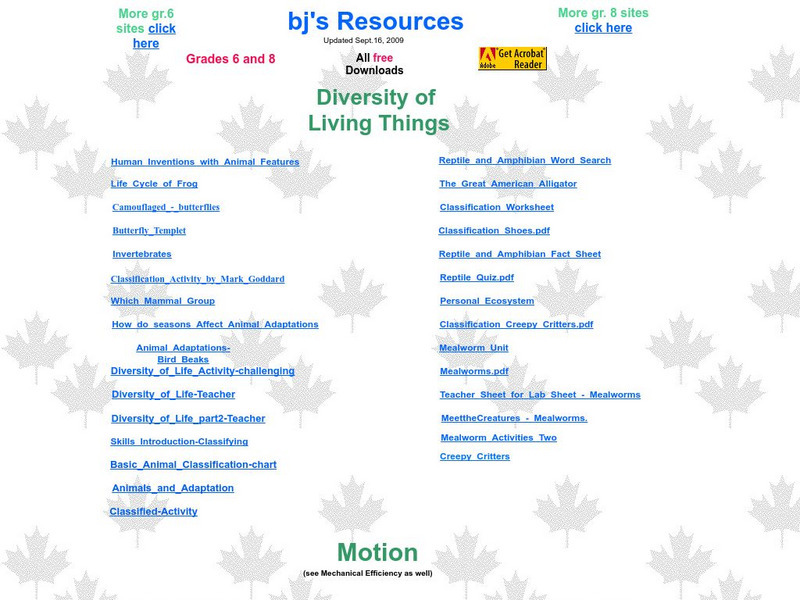Science Education Resource Center at Carleton College
Serc: Investigating Matter, Solid or Liquid: Barthlomew and the Oobleck
Background information: This activity is an extension of the children's exposure to states of matter in the Scott Foresman science series for Grade 2. This activity has a Literacy component. Using the book by Dr. Seuss, "Bartholomew and...
CK-12 Foundation
Ck 12: Fifth Grade Science: Physical Science: Solids, Liquids, and Gases
[Free Registration/Login may be required to access all resource tools.] Explains how to describe matter in the solid state, about the properties of liquid matter and gases, and what the relationship between energy and states of matter is.
TeachEngineering
Teach Engineering: Viscosity: The Flow of Milk
Students study the physical properties of different fluids and investigate the relationship between the viscosities of liquid and how fast they flow through a confined area. Student groups conduct a brief experiment in which they...
National High Magnetic Field Laboratory
Magnet Academy: Heike Kamerlingh Onnes
Heike Kamerlingh Onnes was a Dutch physicist who first observed the phenomenon of superconductivity while carrying out pioneering work in the field of cryogenics. An important step on the way to this discovery was his success in...
National High Magnetic Field Laboratory
Magnet Academy: Making Ferrofluid
An interesting activity where students make a ferrofluid (a liquid with magnetic particles floating in it) and explore how it responds to a magnetic field. Well illustrated.
PBS
Pbs Learning Media: The Ruff Ruffman Show: Teacher's Guide: Kitchen Chemistry
Learn about kitchen chemistry alongside Ruff Ruffman. Students can use the videos, games, and activities from The Ruff Ruffman Show to discover how by investigating solids and liquids and exploring heating and cooling, science can help...
TeachEngineering
Teach Engineering: How Cold Can You Go?
Students explore materials engineering by modifying the material properties of water. Specifically, they use salt to lower the freezing point of water and test it by making ice cream. Using either a simple thermometer or a mechatronic...
Science Buddies
Science Buddies: Cryopreservation: Freezing Plant Tissues
Cryopreservation-storing seeds in ultra-cold liquid nitrogen-is one method for maintaining plant genetic stocks in seed banks. The purpose of this project is to observe the characteristics and outcomes of cryogenically frozen seedlings...
Science Buddies
Science Buddies: Paper Chromatography: Advanced Version 1
This project will teach you the basics of analytical chemistry, which is a must for students who want to go into chemistry or materials science. The molecules in objects we see all around us are constantly attracting each other....
TeachEngineering
Teach Engineering: All Fat Is Not Created Equally!
Students learn that fats found in the foods we eat are not all the same; they discover that physical properties of materials are related to their chemical structures. Provided with several samples of commonly used fats with different...
Other
Lunar and Planetary Institute: Explore! Ice Worlds
Features a collection of hands-on activities, investigations, and explorations designed to engage students in learning about ice, both in the solar system and on planet Earth.
TeachEngineering
Teach Engineering: States of Matter
Students act as chemical engineers and use LEGO MINDSTORMS NXT robotics to record temperatures and learn about the three states of matter. Properties of matter can be measured in various ways, including volume, mass, density and...
Texas Instruments
Texas Instruments: Freezing and Melting of Water
Freezing temperature, the temperature at which a substance turns from liquid to solid, and melting temperature, the temperature at which a substance turns from a solid to a liquid, are characteristic physical properties. In this...
Dartmouth College
Dartmouth College: Centrifugation
"A centrifuge separates a heterogeneous mixture of solid and liquid by spinning it." Use this site to find out how to correctly use a centrifuge in this informative site.
Marilyn J. Brackney
Imagination Factory: Have Fun With Paint
Several techniques for creating unique paintings are described at this website: "Make a Wax Resist," "Paint through Tissue," "Create Texture with Plastic Wrap," and "Paint on Glossy Paper."
Exploratorium
Exploratorium: Salt Volcano
By making oil float on water--with the help of other ingredients--students can create a lava-lite effect.
US Environmental Protection Agency
Epa: Mercury
This site provides a user navigated slide show with animations providing basic information about the element Mercury.
Marilyn J. Brackney
Imagination Factory: Painting Without a Brush
At this site imitate Jackson Pollock and create an abstract painting without the use of a paintbrush. Included are ideas and suggestions for creative painting tools, instructions for making a your creation, and helpful "Tips and Tricks."
New York University
Nyu: Welcome to Water
Educational resource invites users to understand the properties of water by first examining what water is and how we use it and then leads users to further information on the three states that water can exist.
My Science Site
Life Systems: Cells, Tissues, Organs
Extensive site for teachers provides some helpful resources that pertain to plant and animal cells. Includes a microscope diagram as well as plant, animal and pond labs. Also contains links to structures and mechanisms, matter and...
Science Education Resource Center at Carleton College
Serc: Mn Step: Study of Student Precision Using Volumetric Glassware
This activity is an exercise in using various lab equipment for measuring the volume of a liquid. Data is recorded on a spreadsheet and analyzed to see which tool offers the greatest precision.
University of California
Ucsb Chemistry and Biochemistry: Models Matter
Matter of any type can be subdivided into particles that are too small to see, but even then the matter still exists and can be detected by other means. Students will participate in hands-on activities to prove that matter is made up of...
Curated OER
Eternal Egypt: Amphora With Long Neck
This elongated vessel has a long neck and a conical body with a pointed base. The mouth is narrow, and the amphora is provided with two handles. Amphoras were made to contain liquids such as wine.


